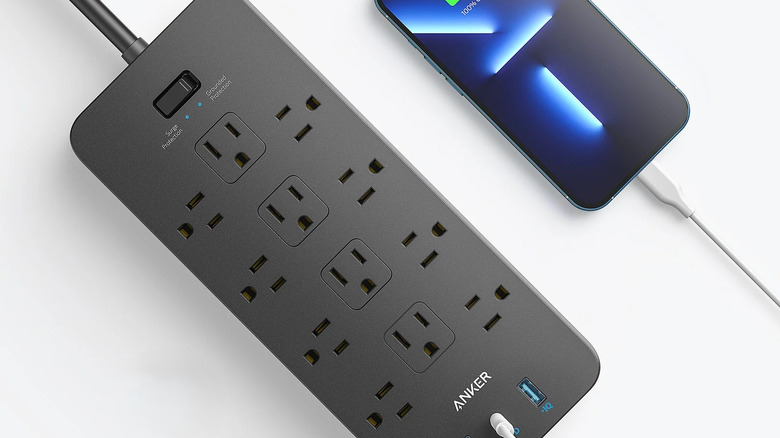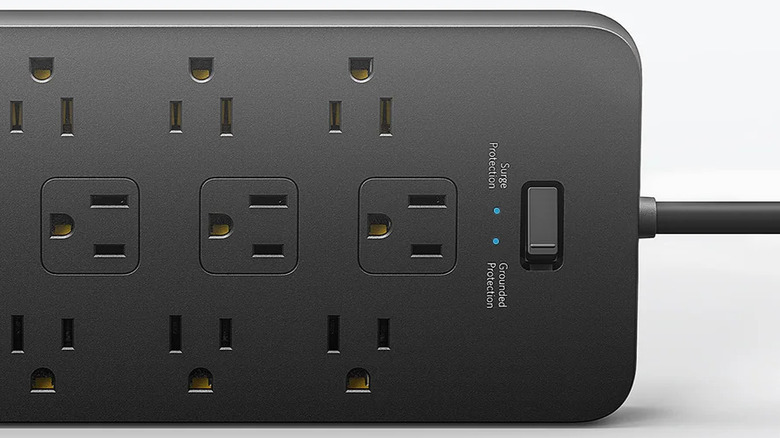How To Tell If Your Power Strip Is A Surge Protector
We may receive a commission on purchases made from links.
While electronic devices and smart gadgets worth trying bring convenience to your life, they also need power to keep running. With a limited number of electrical outlets, you might often find yourself using a power strip. These come in a variety of sizes and shapes, and some even feature USB ports. But if there's one thing you should always ensure your power strip has, it's surge protection.
Surge protection is an important feature that protects devices from power surges and voltage spikes. For example, the standard voltage in U.S. homes is 120 volts, which is what your devices are designed to handle. However, if this voltage surges to 170 volts or more due to faulty wiring, lightning strikes, or other factors, it can end up damaging your devices. A surge protector prevents excessive power from reaching the connected devices, usually using a component called metal oxide varistor to divert excess current to a grounding wire.
Surge protection is crucial when you have expensive devices connected to a power strip, like your TV, gaming console, PC, soundbars and more (though there are things you should never plug into a power strip). Since power strips and surge protectors almost look identical at first glance, though, it can be difficult to tell the difference. If you are unsure if your power strip has surge protection, there are a few ways to find out.
It's easy to tell if your power strip has surge protection
One of the most obvious ways to tell if your power strip has surge protection is by looking for markings. Typically, you should see labels like "Surge Protection" or "Surge Protector" near the sockets. Some power strips also include a dedicated indicator light for surge protection. When the light is on, it means the surge protection feature is active and your devices are protected. If the light is off, it means the surge protector is no longer functioning.
If you have recently bought a power strip, you can check the box or the included documentation to confirm if it has surge protection. You'll also notice a joule rating, which is the maximum energy the strip can handle during a surge. If the joule rating is absent, it likely means it's just a regular power strip. Finally, you can also search for the product specifications online. If a power strip has surge protection, the manufacturer will usually mention it.
All in all, surge protectors aren't difficult to identify, and they're part of the tools and tech you'll want to have during power outages. However, it's important to note that surge protectors also wear out over time. So if the indicator light goes out or if the strip is damaged, it means your devices are no longer protected, and you should replace the surge protector.

